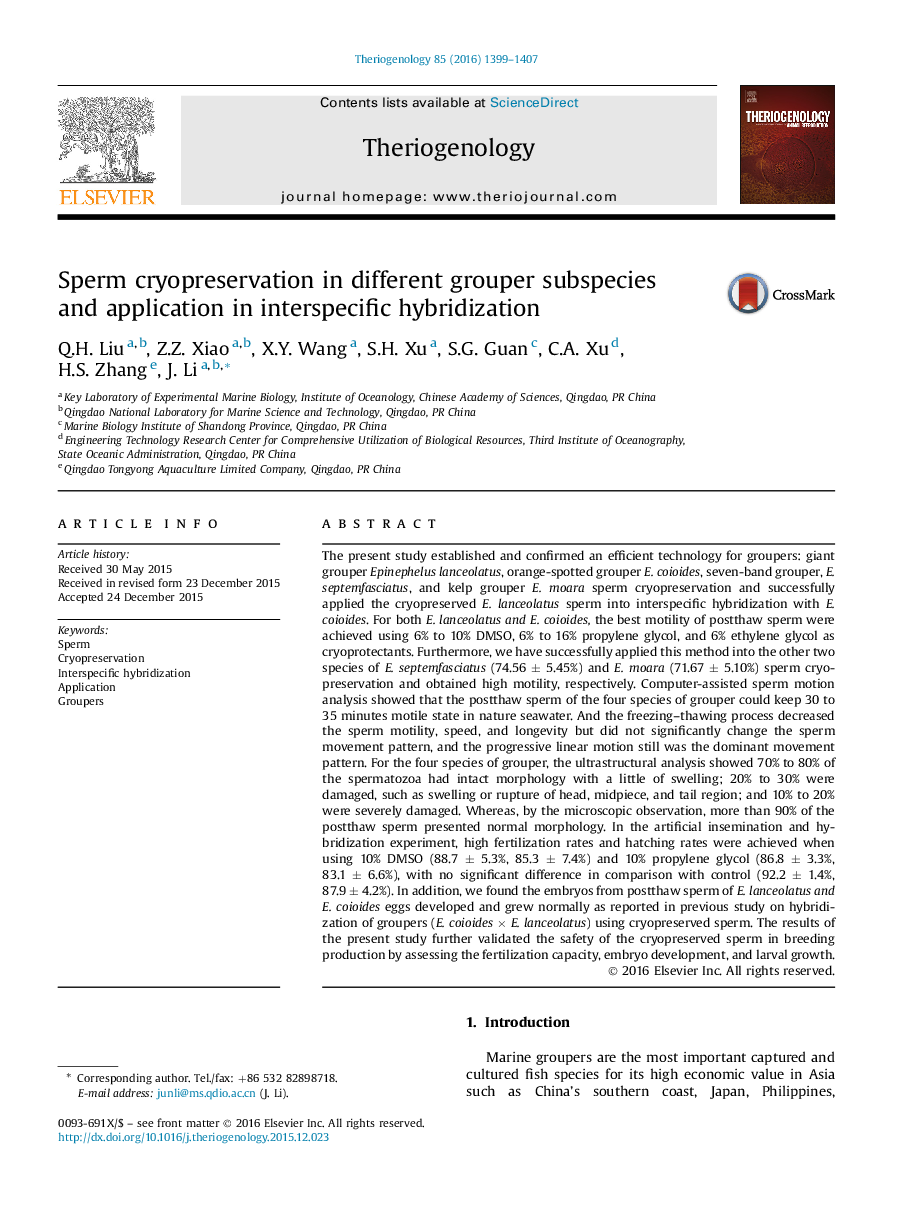| کد مقاله | کد نشریه | سال انتشار | مقاله انگلیسی | نسخه تمام متن |
|---|---|---|---|---|
| 2094786 | 1082052 | 2016 | 9 صفحه PDF | دانلود رایگان |

The present study established and confirmed an efficient technology for groupers: giant grouper Epinephelus lanceolatus, orange-spotted grouper E. coioides, seven-band grouper, E. septemfasciatus, and kelp grouper E. moara sperm cryopreservation and successfully applied the cryopreserved E. lanceolatus sperm into interspecific hybridization with E. coioides. For both E. lanceolatus and E. coioides, the best motility of postthaw sperm were achieved using 6% to 10% DMSO, 6% to 16% propylene glycol, and 6% ethylene glycol as cryoprotectants. Furthermore, we have successfully applied this method into the other two species of E. septemfasciatus (74.56 ± 5.45%) and E. moara (71.67 ± 5.10%) sperm cryopreservation and obtained high motility, respectively. Computer-assisted sperm motion analysis showed that the postthaw sperm of the four species of grouper could keep 30 to 35 minutes motile state in nature seawater. And the freezing–thawing process decreased the sperm motility, speed, and longevity but did not significantly change the sperm movement pattern, and the progressive linear motion still was the dominant movement pattern. For the four species of grouper, the ultrastructural analysis showed 70% to 80% of the spermatozoa had intact morphology with a little of swelling; 20% to 30% were damaged, such as swelling or rupture of head, midpiece, and tail region; and 10% to 20% were severely damaged. Whereas, by the microscopic observation, more than 90% of the postthaw sperm presented normal morphology. In the artificial insemination and hybridization experiment, high fertilization rates and hatching rates were achieved when using 10% DMSO (88.7 ± 5.3%, 85.3 ± 7.4%) and 10% propylene glycol (86.8 ± 3.3%, 83.1 ± 6.6%), with no significant difference in comparison with control (92.2 ± 1.4%, 87.9 ± 4.2%). In addition, we found the embryos from postthaw sperm of E. lanceolatus and E. coioides eggs developed and grew normally as reported in previous study on hybridization of groupers (E. coioides × E. lanceolatus) using cryopreserved sperm. The results of the present study further validated the safety of the cryopreserved sperm in breeding production by assessing the fertilization capacity, embryo development, and larval growth.
Journal: Theriogenology - Volume 85, Issue 8, May 2016, Pages 1399–1407